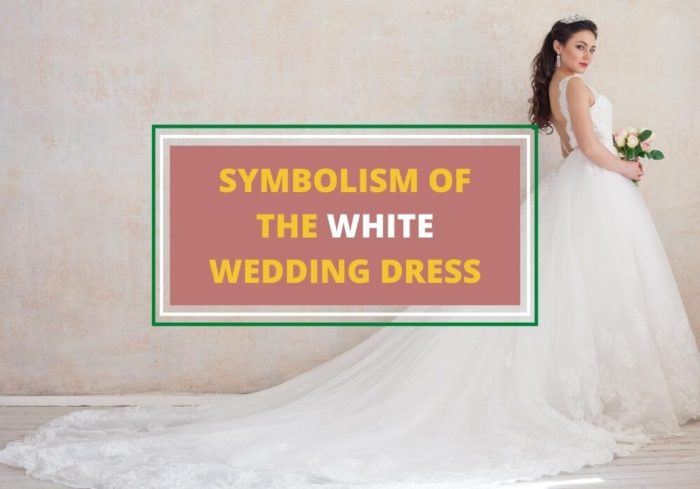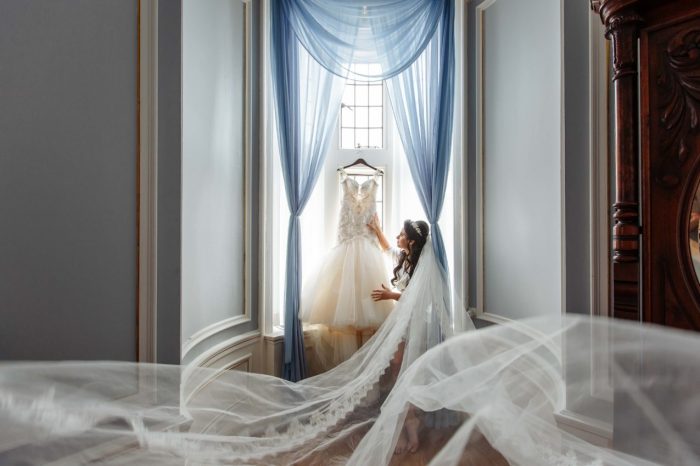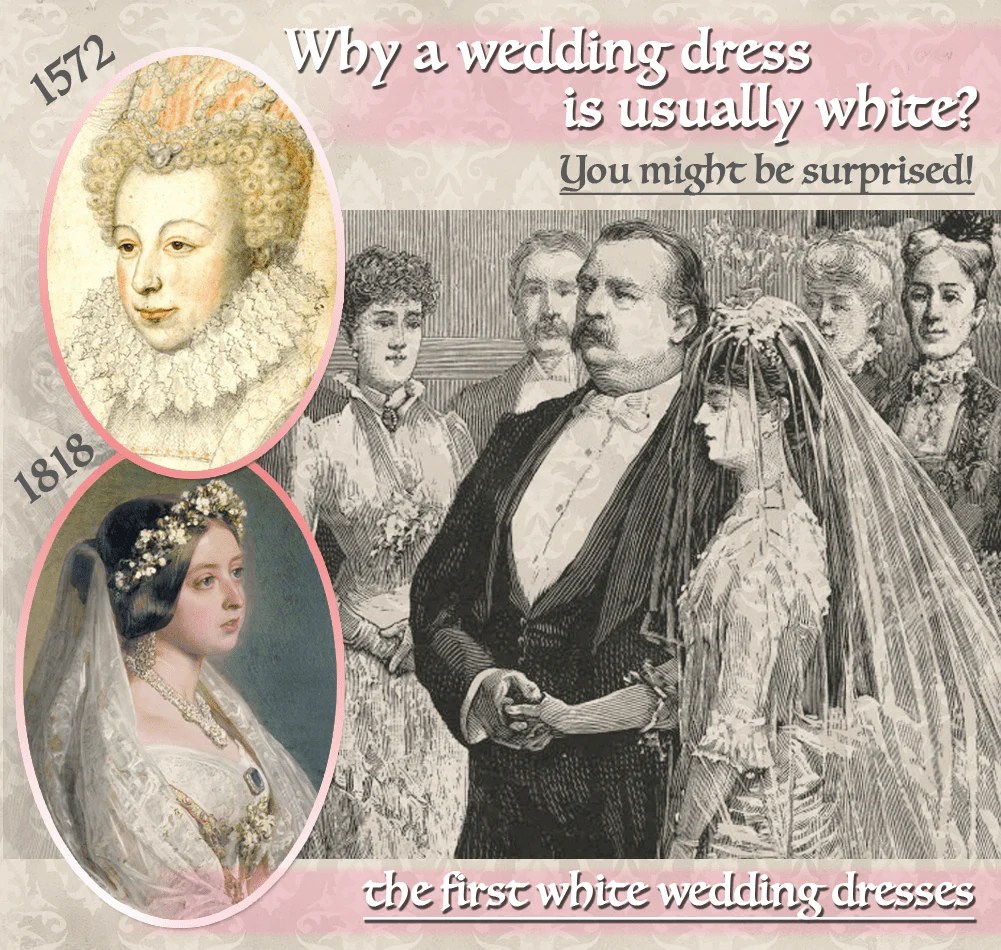
The Symbolism of the White Wedding Dress: What Does The White Wedding Dress Symbolize

Source: agistudio.ca
What does the white wedding dress symbolize – The white wedding dress, a seemingly simple garment, carries a wealth of symbolic weight, evolving significantly throughout history and across cultures. Its meaning extends far beyond mere aesthetics, encompassing notions of purity, new beginnings, wealth, and social status. This exploration delves into the multifaceted symbolism embedded within this iconic attire.
Historical Context of the White Wedding Dress, What does the white wedding dress symbolize
The association of white with bridal attire is a relatively recent phenomenon. Before Queen Victoria’s 1840 wedding, brides wore a variety of colors, often reflecting their existing wardrobe or family resources. Victoria’s choice of a white gown, however, set a powerful precedent, transforming white into the dominant color for Western weddings. This shift was further influenced by Victorian ideals of purity and innocence, linking the color white to a bride’s virginity.
This association, however, wasn’t universally adopted; different cultures and time periods have held diverse interpretations of wedding attire colors.
A timeline illustrating key moments in the history of the white wedding dress:
- Pre-1840: Brides wore various colors, reflecting personal preference and available resources.
- 1840: Queen Victoria’s white wedding dress popularized white as the preferred color.
- Late 19th – Early 20th Century: White becomes strongly associated with purity and virginity in Western culture.
- Mid-20th Century: The white wedding dress becomes a staple in Western wedding traditions, often elaborate and expensive.
- Late 20th – 21st Century: Increased diversity in wedding attire; non-white dresses gain popularity.
A comparison of white wedding dress symbolism across different cultures:
| Culture | Symbolism of White | Historical Context | Modern Interpretations |
|---|---|---|---|
| Western | Purity, virginity, new beginnings, wealth | Influenced by Victorian ideals and Queen Victoria’s wedding | Increasingly diverse interpretations; focus on personal style |
| Asian (varies greatly by region) | Often red (representing good fortune), but white can symbolize mourning in some cultures | Traditional color choices rooted in cultural beliefs and symbolism | Modern brides may opt for white, signifying a modern approach |
| African (varies greatly by region and tribe) | Colors vary widely depending on tradition; white may represent purity or status in some areas | Deeply rooted in cultural and tribal traditions | Modern interpretations incorporate both traditional and contemporary styles |
Purity and Virginity
The traditional association of white with purity and virginity is deeply ingrained in Western wedding culture, largely stemming from Victorian-era ideals. However, contemporary society exhibits a more nuanced perspective on this symbolism. Many modern brides choose white for reasons beyond this traditional interpretation, prioritizing aesthetics, personal style, or simply following established custom.
Examples of how this symbolism is presented (or subverted) in modern media are abundant. Some films and television shows reinforce the traditional association, while others explicitly challenge or ignore it entirely. The increasing prevalence of non-white wedding dresses further reflects this shift in societal attitudes.
Alternative interpretations of white in a wedding context include:
- Clean slate
- Simplicity and elegance
- Sophistication and timeless style
- Celebration of new beginnings
- A reflection of the bride’s personality
New Beginnings and Hope
The color white often symbolizes a fresh start and new beginnings, making it an appropriate choice for a wedding, representing the couple’s embarkation on a new chapter in their lives. The white dress acts as a visual metaphor for a blank slate, embodying hope and optimism for the future of the marriage. Many cultures associate white with positive connotations, reinforcing its suitability for weddings.
The white wedding dress traditionally symbolizes purity and new beginnings, a fresh start for the couple embarking on their married life. Many brides find the perfect embodiment of this symbolism in the exquisite designs offered by wedding dresses Maggie Sottero , which often incorporate intricate details that enhance this timeless meaning. Ultimately, the dress chosen, regardless of designer, becomes a powerful visual representation of the bride’s personal journey into marriage.
A bride’s feelings about wearing a white dress as a symbol of new beginnings might be described as follows:
As I slipped into the white gown, a wave of tranquility washed over me. The pristine fabric felt like a blank canvas, a symbol of the fresh start awaiting me and my beloved. It wasn’t just a dress; it was a promise, a silent vow to embrace the future with open arms, free from the burdens of the past, and filled with the hopeful anticipation of a life shared.
Wealth and Status

Source: wardrobeshop.com
Historically, the ability to wear a white wedding dress was often a sign of wealth and social standing. White fabric, particularly fine materials like silk or satin, was expensive and not readily available to everyone. The extravagance of a white wedding dress, therefore, could serve as a visible display of affluence and social prominence. This association has evolved over time, but the cost of wedding dresses still plays a role in their perceived status.
In a lavish wedding scene, the bride’s intricately beaded, floor-length white silk gown, paired with a diamond tiara and delicate jewelry, immediately conveyed her family’s significant wealth and high social standing. The sheer opulence of her attire contrasted sharply with the simpler attire of other guests, subtly emphasizing her privileged position.
Modern Interpretations and Alternatives

Source: symbolsage.com
In contemporary weddings, the traditional white dress is increasingly challenged. Brides are choosing a wider range of colors and styles, reflecting personal preferences and a move away from rigid traditions. The symbolism of these alternative choices is diverse and often reflects the bride’s individuality and the unique nature of their relationship.
| Dress Color | Potential Symbolic Meaning | Cultural Context (if any) | Modern Interpretation |
|---|---|---|---|
| Ivory | Similar to white, but perhaps softer and more approachable | Often used as a softer alternative to pure white | Classic, elegant, timeless |
| Champagne | Warmth, sophistication, understated elegance | N/A | Romantic, luxurious |
| Red | Passion, love, good fortune (in some cultures) | Strong cultural significance in many Asian cultures | Bold, confident, passionate |
| Blue | Tranquility, loyalty, purity (in some cultures) | Historically associated with royalty and purity | Serene, sophisticated, elegant |
FAQ Overview
What about colored wedding dresses? What do they symbolize?
The symbolism of colored wedding dresses varies greatly depending on the color and culture. For example, red often signifies passion and good fortune, while blue can represent loyalty and tranquility. Ultimately, the meaning is largely personal to the bride.
Is it true that Queen Victoria started the white wedding dress trend?
While Queen Victoria’s choice of a white gown for her wedding in 1840 significantly popularized white wedding dresses, the practice wasn’t entirely new. However, her influence cemented white as the dominant color for bridal wear in Western cultures.
What if a bride chooses not to wear white?
Choosing a non-white wedding dress is a perfectly valid and increasingly common choice. It allows brides to express their personal style and challenge traditional expectations, signifying a move towards individual expression and breaking free from established norms.